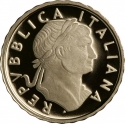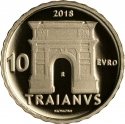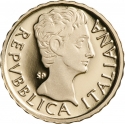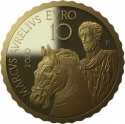You are about to finish your registration. Please check your mailbox (including spam folder). There should be a letter with a confirmation link. Check setting to make sure that your e-mail address is correct.
Send letter againDescription
Hadrian (76–138) was Roman emperor from 117 to 138. His father was of senatorial rank and was a first cousin of Emperor Trajan. Hadrian married Trajan's grand-niece Vibia Sabina early in his career before Trajan became emperor and possibly at the behest of Trajan's wife Pompeia Plotina. Plotina and Trajan's close friend and adviser Lucius Licinius Sura were well disposed towards Hadrian. When Trajan died, his widow claimed that he had nominated Hadrian as emperor immediately before his death.
Rome's military and Senate approved Hadrian's succession, but four leading senators were unlawfully put to death soon after. They had opposed Hadrian or seemed to threaten his succession, and the Senate held him responsible for their deaths and never forgave him. He earned further disapproval among the elite by abandoning Trajan's expansionist policies and territorial gains in Mesopotamia, Assyria, Armenia, and parts of Dacia. Hadrian preferred to invest in the development of stable, defensible borders and the unification of the empire's disparate peoples. He is known for building Hadrian's Wall, which marked the northern limit of Britannia.
Hadrian energetically pursued his own Imperial ideals and personal interests. He visited almost every province of the Empire, accompanied by an Imperial retinue of specialists and administrators. He encouraged military preparedness and discipline, and he fostered, designed, or personally subsidised various civil and religious institutions and building projects. In Rome itself, he rebuilt the Pantheon and constructed the vast Temple of Venus and Roma. In Egypt, he may have rebuilt the Serapeum of Alexandria. He was an ardent admirer of Greece and sought to make Athens the cultural capital of the Empire, so he ordered the construction of many opulent temples there. He suppressed the Bar Kokhba revolt in Judaea.
Hadrian's last years were marred by chronic illness. He saw the Bar Kokhba revolt as the failure of his panhellenic ideal. He executed two more senators for their alleged plots against him, and this provoked further resentment. His marriage to Vibia Sabina had been unhappy and childless; he adopted Antoninus Pius in 138 and nominated him as a successor, on the condition that Antoninus adopt Marcus Aurelius and Lucius Verus as his own heirs. Hadrian died the same year at Baiae, and Antoninus had him deified, despite opposition from the Senate.
Artist: Maria Grazia Urbani
Obverse

|
Depicts a bust of Hadrian facing right inspired by a portrait of the Roman Age conserved at the Uffizi Gallery in Florence, surrounded by the country name. REPVBBLICA ITALIANA |
|---|---|
Reverse

|
Depicts the Temple of Venus at Hadrian's Villa in Tivoli; the inscription “HADRIANVS AVGVSTVS” above, the mintmark (R) on the top left, the issue year flanked by columns, the initials of the engraver (MGU) at the base of the architecture, initials of the designer, value below. HADRIANVS AVGVSTVS |
| Edge |
10 Euro
Roman Emperors
Hadrian
Subscribe series
KM# 409
Roman Emperors
Hadrian







